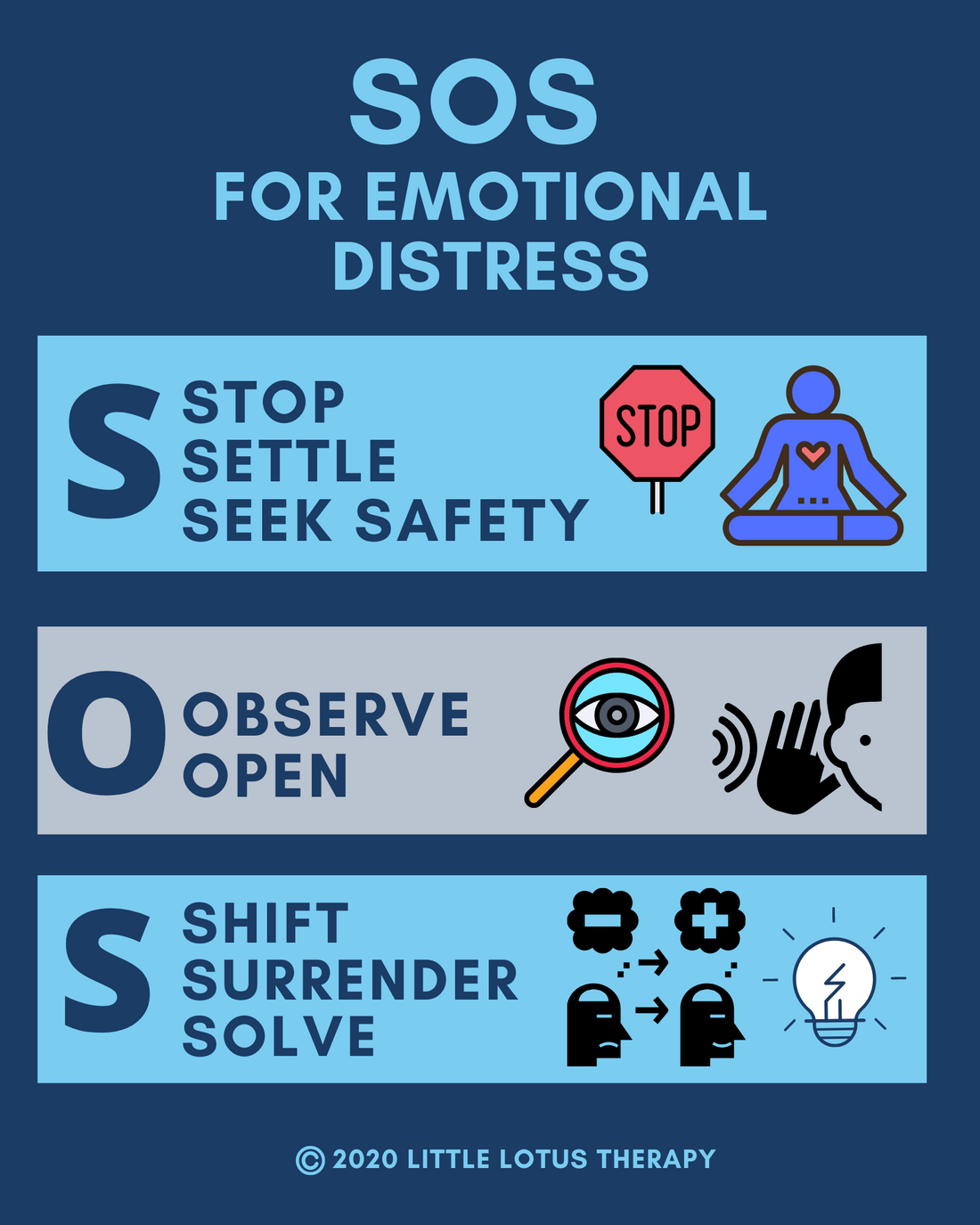
SOS for Emotional Distress
Monica JackmanIn the early 1900s, SOS became the international signal for distress....a call for help. While some people think that SOS is an acronym for phrases such as "save our ship", or "save our souls", the letters were actually chosen because they make a simple pattern in Morse code- 3 dots, 3 dashes, 3 dots, or ...---...
The minds who gathered together to develop this international code recognized that people in distress needed a simple, easily transmittable, effective and recognizable signal to send a message for help. In addition to its value in Morse code, the letters SOS also are both a palindrome (read same way backwards and forwards) AND an ambigram, which means it can be read the same right side up or upside down. This has utility and value in situations where people may be stranded and need to write a signal on the ground that can be read from potential rescuers coming from any direction.
SOS has been used for over 100 years to signal distress and bring help and rescue in the midst of crisis. But what about everyday emotional distress that requires rescue, often from our own patterns, overthinking, and habits?
Rhianna had it right..."S.O.S.! Please, someone, help me. It's not healthy for me to feel this way."
Emotions and emotional distress are two separate and distinct entities. Emotions are healthy messengers that help us to survive, gain clarity, adapt, fight injustice, connect with others, and heal. Emotional distress, however, is the suffering that comes with habits such as overthinking, self criticism, dwelling in the past, worrying about the future, and mistaking our thoughts for facts.
And much like a crisis, when we are experiencing emotional distress and overwhelm, we need a pattern that is simple and easily recognizable to send a signal to ourselves that we are in need of help to overcome the distress.
The SOS method is a simple (though not necessarily easy!) process for working through emotional distress. Used regularly, this process may even help us to prevent distress by creating and establishing a healthy habit for responding to challenging emotions as they arise. This method uses the following three steps:
S: Stop, Settle, Seek Safety: The first step when responding to emotional distress is to pause, allow physiological parts of emotion (e.g., racing heart, surge of anger-related muscle tension, intense welling of tears) to settle, and seek an area that feels safe if needed.
O: Observe, be Open (and Objective!): Objectively observe and label thoughts, bodily sensations, emotions, and perceptions of the situation in oneself, and also consider the perspective of others.
S: Shift, Surrender, Solve: Shift your mindset from one of active distress to one of acceptance and/or resolution. This can include surrendering to the emotion and allowing it to run its course, letting go of thoughts and beliefs that are not true, and problem solving an action to answer the call of the distress signal.

If you would like to learn more about the SOS method, please consider joining our OpenMind Rainbow Resilience and Wellness Practices series:
With much love,
Monica

1 comment
Great message Monica would love to join the open mind series